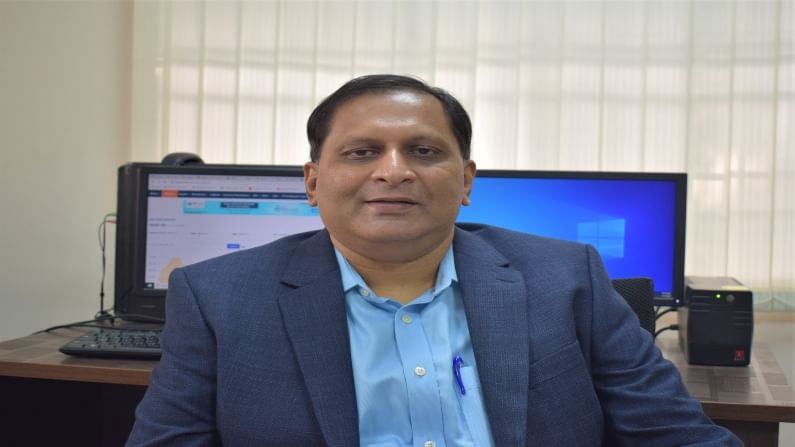Looking for right asset allocation strategy? Check out JM Financial's Ramanathan's advice
Satish Ramanathan, MD and CIO- Equity at JM Financial Asset Management, said there is a need to wait for the festive season to start.

Broader markets have outpaced the benchmark equity indices BSE Sensex and NSE Nifty amid the ongoing bull run since March 2020. Where the BSE Midcap and Smallcap index have gained 130% and 190%, respectively during the past 17 months, the BSE Sensex has gained 107% during the same period. So, can we expect some correction going ahead? and how investors can protect their equity portfolio? In an interview with Money9, Satish Ramanathan, MD and CIO- Equity, JM Financial Asset Management, shared his views on the strategies investors should adopt right now.
Edited excerpts:
Q: Is it the right time to rebalance equity portfolio towards largecaps?
Ramanathan: Large caps have the advantages of lower cost of capital, size to deploy large sums of cash flows and build/acquire new businesses or grow in the same line. Hence, large caps should form an integral part of the asset allocation strategy. However, we are not in favour of short term tactical strategies because timing the market is so difficult. Indian midcaps also have a long runway ahead in terms of growth and can enter new businesses which do not interest large companies. There are many examples of such companies in fashion/ retail and building materials. So we believe a diversified basket of mid and largecap companies in secular growth businesses would be an appropriate asset allocation strategy.
Q: What investors should do in case of correction in the Indian equity market?
Ramanathan: Corrections are usually a good time to increase allocations rather than move away. Global equity markets have had a good run on the back of ample liquidity and lack of investment opportunities. Indian equities may correct if this global liquidity were to decline due to a Fed Taper or inflation sustains and pushed up interest rates. Structurally, we believe the Indian economy is in a good place – Healthy forex reserves, companies reducing debt allowing headroom for growth. So we would recommend investors to build the portfolios, should a correction take place.
Q: What does US taper mean for the Indian equity investors?
Ramanathan: The Fed taper could reduce global liquidity and push up the cost of capital. So far there are limited signs of interest rates increasing as capex is not yet large enough to absorb excess liquidity. Capex is muted as companies are yet to utilise their capacities fully, and are opting to pay down debt. Individual home buying is also on a lower level and hence only government spending on infrastructure is taking place. We are yet to visibly see lower liquidity pushing up yields and hence impacting sentiment in equity markets.
Q: What kind of fall we can see if FII may pull out some money now?
Ramanathan: FIIs used to be a dominant force in our equity markets but are now effectively counterbalanced by domestic retail and institutional investors. Further, we are seeing large inflows from private equity investors as well which is more on a strategic level. So we are not as concerned about a sudden FII pull out as we once used to be. Also, recent events in Chinese capital markets make India more attractive, and we could see some reallocation benefits as well.
Q: Can you list few stocks which investors can accumulate on the dip?
Ramanathan: We do not recommend individual stocks. Our stock selection strategy emphasises sustainable growth potential over the medium term with superior operational metrics that results in growing free cash flows and a healthy return on equity.
Q: How do you see midcap and smallcap stocks despite the massive run-up?
Ramanathan: There have been some excesses in this segment and hence may suffer a little more. Further, this segment sees active participation by smaller investors who do not have the appetite to take volatility which itself causes sharp movements. So yes, one may expect some more volatility here, but we would use it to build as we are very positive on the longer-term prospects of some of our selected midcap companies.
Q: What are the mistakes do you think investors should avoid at all-time high levels?
Ramanathan: In general investors tend to buy lower-quality stocks (either business or governance-related issues) near the peak of the market resulting in sharp erosion in the capital. In our experience, avoiding this temptation is the most important thing to do when markets are overheated. When markets fall, all stocks do correct, bringing down the price-to-earnings (PE) of the market, but our research and experience show that poorer quality businesses and stocks tend to correct more.
Q: Which sectors do you think will outperform now? and where we may see some correction?
Ramanathan: India has been on a constrained growth trajectory for several years now, post GST and Covid-19. What has taken place during this period is premiumisation and shift in markets from unorganised to organised. However many sectors have not grown on an absolute basis. Hence, we could witness growth in consumption and demand for personal transportation. Some of sectors which have seen consolidation after a long period, such as metals may continue to generate healthy cash flows but will still be exposed to global volatility in prices. We need to wait for the festive season to start and also hope that the third phase of Covid does not take place and impact sentiments and demand.